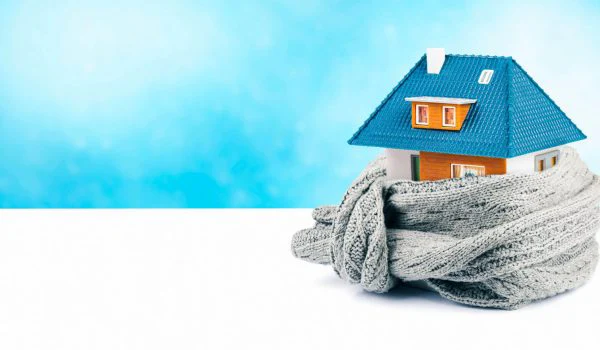
What is the Best Attic Insulation for California?
Homeowners across Los Angeles ask a simple question: what insulation works best in a warm, dry climate with hot summers, cool nights, and rising energy costs? The honest answer depends on the home’s age, duct layout, attic access, wildfire exposure, and budget. Still, a clear pattern emerges from thousands of attic projects across Los Angeles County: the best-performing attics pair air sealing with the right R-value and a material that fits the house’s needs, not just the trend of the year.
The California context: climate zone, code, and comfort
Most of Los Angeles sits in California Climate Zone 9 or 10. Heat gains are the main issue for much of the year, yet winter comfort still matters in the valleys and foothills. Current code targets around R-38 to R-49 for attic insulation in existing homes, with R-49 as the practical sweet spot. In practice, many LA homes built before 2000 still sit at R-11 to R-19, often with gaps and compressed sections that cut effective performance by 20 to 40 percent. Upgrading to R-38 or R-49 reduces summer heat transfer, shortens AC run time, and flattens those late-afternoon spikes on the electric bill.
Material options that actually work in Los Angeles
Fiberglass blown-in, cellulose blown-in, and spray foam all appear in local attics. Each has strengths, limits, and cost differences that matter.
Fiberglass blown-in remains the most common path to R-38 or R-49 in Los Angeles. It is clean, inert, holds R-value well at typical attic moisture levels, and plays nicely with recessed lights and duct chases when paired with proper dams. It installs fast and costs less than foam. In hot attics, fiberglass performs predictably as long as air leaks are sealed first. For most single-family homes in the city and Valley, blown fiberglass over air sealing is the top value choice.
Cellulose blown-in offers strong coverage and good resistance to air movement through the blanket. It can help calm temperature swings in older homes with plank decking. It uses recycled content and fire retardants. In humid climates, settled density matters; in Los Angeles’ dry climate, that risk is lower, though some settling can occur over time. Good installers calculate depth to hit target R after natural settling. For homeowners who want recycled content and a “tight” blanket, cellulose can be a smart choice when installed with air sealing and baffles.
Spray foam (open-cell or closed-cell) changes the attic from vented to conditioned when applied at the roof deck. It can be the right move when ducts and air handlers sit in the attic and the homeowner wants the equipment inside the thermal boundary. Closed-cell offers higher R per inch and adds structural rigidity; open-cell is lighter and easier to trim. That said, spray foam carries a higher price, requires strict fire and ignition barrier rules, and demands experienced installers. For most Los Angeles homes, vented attics with blown insulation deliver a better cost-benefit. Foam shines in select cases: low-slope roofs with no soffits, complex mechanicals in the attic, or major remodels.
Air sealing first: the step many homes miss
Insulation slows heat flow; it does not stop air leaks. Small gaps at can lights, top plates, plumbing penetrations, and attic hatches can equal a window left open year-round. Sealing those leaks before adding insulation changes the outcome. In Los Angeles attics, common targets include wire penetrations, bath fan housings, the chimney chase with proper clearances, and the access hatch. A well-sealed attic can reduce AC runtime by measurable margins, often 10 to 20 percent in leaky homes. Pure Eco Inc treats air sealing as a core step on attic insulation Los Angeles projects, not a nice-to-have.
Ventilation and baffles matter in hot-summer attics
Vented attics use soffit and ridge or gable vents to move hot air out. That airflow requires a clear path. Installing baffles along the eaves prevents insulation from blocking the soffits and keeps fiberglass or cellulose from drifting into the intake. The result is a cooler roof deck, a drier attic, and insulation that holds its R-value. Many LA homes have partial or clogged soffits; clearing or adding venting during the upgrade helps the whole system work.
Radiant barriers: helpful or hype?
Radiant barriers can reduce radiant heat from the roof deck in peak summer. In Los Angeles, the benefit ranges widely. Homes with dark shingle roofs and long afternoon sun sometimes see attic temperature drops of 5 to 10 degrees. That said, the barrier does not replace insulation; it complements it. If the budget is tight, invest in air sealing and R-49 first. Add radiant barrier when the roof is accessible or during re-roofing for better economics.
What R-value is best for Los Angeles?
For most single-family homes, R-38 is the minimum target, and R-49 is the practical best. The cost difference between R-38 and R-49 with blown-in insulation is often modest compared to long-term savings and comfort. On many attic insulation Los Angeles projects, Pure Eco Inc recommends R-49 unless roof height, hatch clearance, or cost constraints push against it. In short attics, a combination of batt dams around the hatch and blown material across the field can hit the number without blocking access.
Fire, pests, and air quality considerations
All insulation in California must meet fire safety standards. Cellulose uses fire retardants; fiberglass is noncombustible by composition. Around flues and can lights without IC ratings, clearances and heat-resistant covers are mandatory. For air quality, attic insulation Los Angeles vacuuming the attic floor, isolating the living space during work, and using sealed can light covers reduces dust intrusion. Rodent activity is common in older LA homes. A proper cleanup, entry-point sealing at eaves and vents, and screening over exhaust terminations prevent re-infestation. Insulating without addressing pest paths risks fouling the new material and pushing odors into living areas.
Ducts in the attic: a big swing factor
A well-insulated attic still punishes ducts that leak or lack insulation. Duct losses in hot attics can reach 20 to 30 percent. While upgrading attic insulation, it is the right time to seal duct joints with mastic, add or replace duct insulation to R-8, and correct kinks. This small scope change often pays back faster than the insulation itself. Homes that run long cooling cycles in late afternoons benefit most.

Cost ranges in Los Angeles
Pricing varies with access, cleanup scope, choice of material, and target R-value. As a general guide for vented attics:
- Blown fiberglass to R-38 or R-49: lower to mid price per square foot, often the best ROI for typical homes.
- Blown cellulose to R-38 or R-49: similar to fiberglass, sometimes slightly higher, with strong coverage and recycled content.
- Spray foam at the roof deck: several times the cost of blown options, justified in select cases with complex mechanicals or design goals.
A site visit in Los Angeles helps refine numbers. Homes with knob-and-tube wiring (still present in some pre-1940s houses) require special handling or electrical upgrades before covering.

Which insulation is best for California homes?
For most Los Angeles homes with vented attics, blown fiberglass or cellulose over thorough air sealing, baffles at the eaves, and proper hatch treatment is the best balance of performance, cost, and code compliance. Aim for R-49 if space allows. Add duct sealing and R-8 duct wrap while the attic is open. Consider a radiant barrier in high-solar-exposure homes or during roofing work. Choose spray foam at the roof deck only when the design and mechanical layout make a conditioned attic the smarter path.
A quick decision checklist
- Is the attic air sealed at top plates, lights, ducts, and the hatch?
- Can the soffits breathe with baffles installed at every bay?
- Will the final level deliver R-49 without blocking access?
- Are ducts sealed and insulated to at least R-8?
- Are rodent entry points and droppings addressed before installation?
How Pure Eco Inc approaches attic insulation in Los Angeles
A strong result comes from sequence and detail. The crew starts with a cleanout and source control for pests, then air seals critical leaks with foam and mastic. They install baffles along the eaves, dam the hatch, protect clearances at flues and non-IC lights, and then blow to depth for R-38 or R-49. Duct sealing and wrap upgrades run in parallel when needed. Before leaving, they weatherstrip the hatch and document depth readings at several points. That process repeats across Los Angeles neighborhoods, from Encino to Eagle Rock, Culver City to Pasadena, where attic heights, rooflines, and sun exposure vary block by block.
Local nuances across Los Angeles
Coastal areas like Santa Monica and Venice see milder peaks and higher moisture, so venting and baffles are a priority. The Valley runs hotter, so R-49 plus duct improvements gives the biggest gain. In hillside homes in Silver Lake or Mount Washington with low-slope roofs and tight access, dense blankets of blown insulation after targeted air sealing often outperform complicated foam conversions. Wildfire-prone edges near Woodland Hills or Tujunga call for ember-resistant vents and careful material choices with proper clearances.
Ready for an attic that performs year-round?
Homeowners searching for attic insulation Los Angeles solutions benefit most from clear diagnosis and careful installation. Pure Eco Inc focuses on the basics that move the needle: air sealing, correct R-value, venting, and duct performance. For a fast, local quote and a plan that fits the house and budget, contact Pure Eco Inc. The team serves Los Angeles, the Valley, the Westside, and nearby cities, and schedules most attic upgrades in a day.
Pure Eco Inc. provides professional attic insulation and energy-saving solutions in Los Angeles, CA. For over 20 years, our family-owned company has helped homeowners improve comfort, reduce utility bills, and make their homes more energy efficient. We specialize in insulation upgrades, spray foam installation, and attic cleanup for homes across Los Angeles County. At Pure Eco Inc., we believe in treating our customers like family and creating a greener, healthier living environment for every household we serve. Call today to schedule an attic insulation inspection or get a free estimate. Pure Eco Inc.
422 S Western Ave #103 Phone: (213) 256-0365 Website: https://www.pureecoinc.com Social Media:
Facebook |
X |
Instagram |
Yelp
Map: View on Google Maps
Los Angeles,
CA
90020,
USA